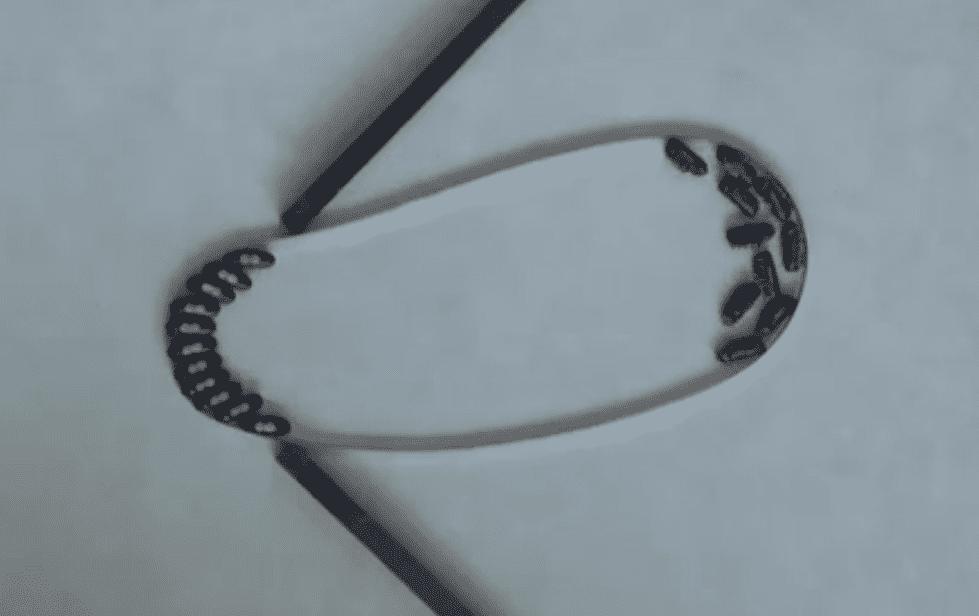
Swarms of rod-like, self-propelled robots have been made to work together to navigate obstacles in a new study by Hamid Kellay of the University of Bordeaux and colleagues. Resembling cockroaches, the toy robots were confined to corrals where they self-organized into distinctive patterns. When the corrals were flexible and moveable, the robots could join forces and move the corrals around obstacles. The research could lead to practical applications including soft, agile robots that resemble living cells and can move through complex biological environments.
Large groups of rod-like particles that propel themselves forward are known to display a range of fascinating behaviours. Previous studies of the dynamics of these systems have typically focused on how unconfined self-propelled particles dissipate over time. However, little attention has been paid to the inertia of such systems, which defines their overall direction of motion.
To explore these dynamics, Kellay’s team use rod-shaped robot toys with asymmetrical legs. Each is about 4 cm long and contains a battery-powered vibrator, which drives it forward. When just a few robots are confined to a corral, the robots move around randomly and resemble molecules in a gas. However, when the robot density is increased, a certain fraction of the robots lined-up in large clusters against boundaries at either end of the corral. The rest of the robots behaved like a gas and as time progressed, a well-balanced equilibrium emerged as individual robots switched between the cluster and gas phases.
Turning corners
The team also used a flexible and light-weight corral that could be pushed around by the robots. In this case, the robots could join forces and push the entire corral thorough a gap between two barriers (see figure), turn corners and move the corral around an obstruction.

Soft robots walk like caterpillars and swim like jellyfish
By tracking these motions, the team could quantify the inertial behaviour of the corral boundary in terms of several parameters related to robot motion. Using these values, they created simple yet accurate computer simulations of the system.
The discoveries made by Kellay’s team could aid the design of microscopic robots, consisting of many self-propelled particles confined in flexible, moveable boundaries. The devices would have highly tuneable and programmable properties. This could help them to navigate nimbly through complex biological systems, accurately mimicking the motions of microbes such as bacteria.
The research is described in Physical Review Letters and videos of the experiments can be viewed on Physics.



